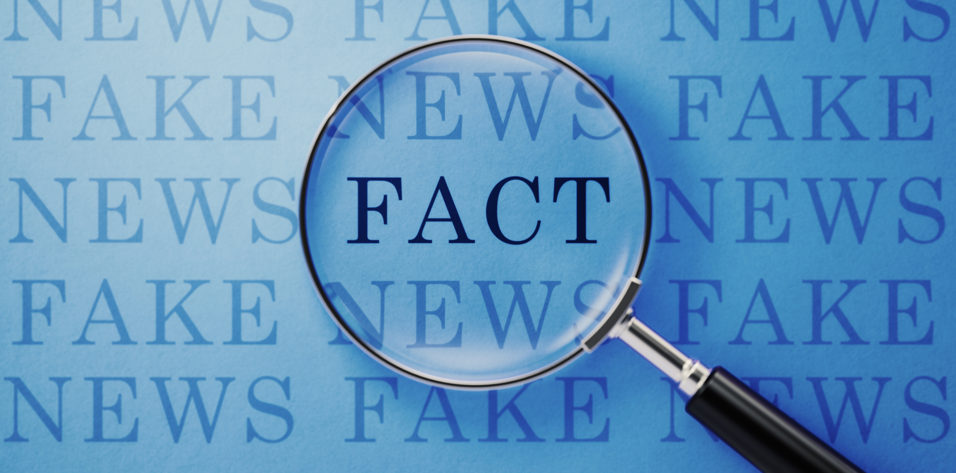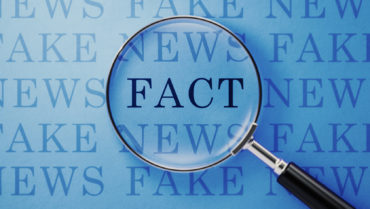
Hold it! Before anyone gets all uptight with knuckles whitening, let me be clear: Although the concept of #FakeNews has been popularized by the President of the United States, this editorial is, like all of CRST Europe, apolitical.
At the 2019 American-European Congress of Ophthalmic Surgery European Symposium—one of the best meetings I’ve ever attended—I was asked to introduce a symposium titled “Fake News in Medicine.” Initially, I thought this was going to be controversial, considering our audience of key opinion leaders, industry representatives, investors, researchers, and scientists. There is no doubt that fake information can be sensationalistic and, in this age of social media, can go viral in an instant, potentially causing considerable harm. An obvious example is that of the MMR vaccine against measles, mumps, and rubella, and its supposed link with autism—a rumor that began with a now-retracted study published in the Lancet.1 This resulted in measles epidemics in many countries, including the United Kingdom and the United States, the latter of which currently has its highest number of measles cases in 25 years.2
The term fake news and its corresponding hashtag should be avoided in medicine. Its use is, in current parlance, condemnatory and deprecatory and thus unprofessional. More important, the phrase is being used to encapsulate everything from truly fake information to facts that may simply be poorly researched or reported, conveyed inaccurately, misleading, or just overblown. We need more precise terminology to describe that which we refer to as fake news. Terms such as misinformation or falsehoods might be better options, based on the context of use: Are the facts real or not, and/or have they been conveyed poorly via shoddy journalism?
An example of the latter is an article titled, “Pioneering Six-Minute Cornea Transplant Surgery Could Spell the End for Reading Glasses.”3 Full disclosure: That article featured yours truly, and, yes, I was a bit uncomfortable. The facts within the article are true, but the article’s headline is overblown and conveys an inaccurate concept to the reader.
Readers should be aware, if they aren’t already, that there is an organized and sinister force active in the propagation of false medical news. Last year, a peer-reviewed article reported disturbing information about trolls and bots controlled by a Russian internet research agency that promote antivaccination debates using the hashtag #VaccinateUS on Twitter. This is an example of, in those authors’ words, weaponized health communications.4
So what is our role in controlling the emergence of not-so-accurate medical or ophthalmic news? This is a major problem that is difficult to tackle. There is no easy solution. We must not take a passive role by permitting the propagation of incorrect or misleading information. We are in positions of influence, and I truly believe we should call out and tackle the sources of misinformation wherever possible and continue to challenge our colleagues in the profession and the industry to do so. In particular, we should challenge sources and rally support from our colleagues in the online space, where impact is greatest.
Most of all, we should ourselves avoid generating false news, which can occur when we are influenced by industry, our own ego, or, of course, revenue. I have purposely avoided providing specific examples of the propagation of false or misleading information in our profession (besides my own above) so as not to offend any specific party, but I am sure readers can think of many such instances they have encountered.
Sheraz M. Daya, MD, FACP, FACS, FRCS(Ed), FRCOphth
Chief Medical Editor
1. Wakefield AJ, Murch SH, Anthony A, et al. Ileal lymphoid nodular hyperplasia, non-specific colitis, and pervasive developmental disorder in children [retracted]. Lancet. 1998;351:637-641.
2. New measles surveillance data from WHO. World Health Organization. August 12, 2019. www.who.int/immunization/newsroom/new-measles-data-august-2019/en/. Accessed September 30, 2019.
3. Pioneering six-minute cornea transplant surgery could spell the end for reading glasses with patients ‘able to make out small print within minutes.’ Daily Mail. June 22, 2019. www.dailymail.co.uk/news/article-7171229/Pioneering-six-minute-cornea-transplant-surgery-spell-end-reading-glasses.html. Accessed September 30, 2019.
4. Broniatowski DA, Jamison AM, Qi S, et al. Weaponized health communication: twitter bots and Russian trolls amplify the vaccine debate. Am J Public Health. 2018;108(10):1378-1384.


